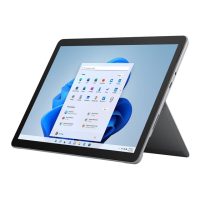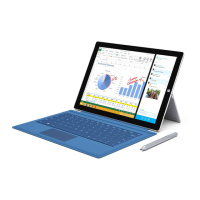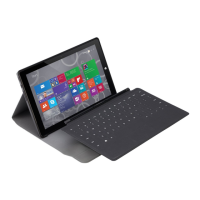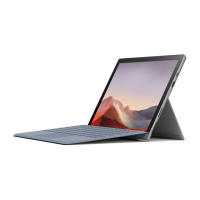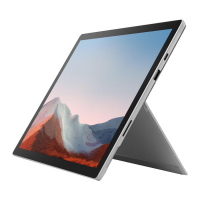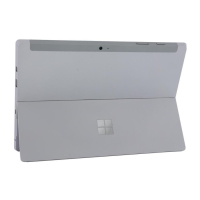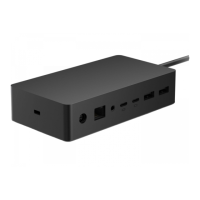© 2014 Microsoft Page 58
To start backing up and creating a history of your files, you'll first need to set up a File History drive and turn File
History on. We recommend backing up your files to an external drive or network.
To set up a drive or network location for your backup, see Set up a drive for File History on Windows.com.
Networking
Surface has built-in Wi-Fi that you can use to get online. Once you’re online, you can browse the Internet, get
apps, send email, and access other computers and devices on your network.
Connect to a Wi-Fi network
1. Open the Settings charm, then tap or click the wireless
network icon ( ).
2. Tap or click a network name and then choose Connect.
(If you want to connect to this network every time it's
in range, select Connect automatically).
3. If prompted, type your network security key (network
password), and then tap or click Next. If you need help
finding your wireless network password, see How to
find your wireless network password on Surface.com.
4. If prompted, choose whether or not you want to connect to other PCs and devices on the network.
Choose No if you’re connecting to a network in a public place like a café.
If you have problems connecting to a wireless network, see Can’t connect to a wireless network on Surface.com.
No Wi-Fi networks?
When a Wi-Fi network isn’t available, you can try one of the following options:
Surface 2 (AT&T 4G LTE): You can use the built-in 4G/LTE connectivity. For info about this, see Mobile
networking on Surface 2 (AT&T 4G LTE) in this guide.
You might be able to use your phone’s Internet connection (see Tethering in this guide).
Use the Skype Wi-Fi app to find a Wi-Fi hotspot. See Skype Wi-Fi on Skype.com.
Use a wired connection (see Connect to a wired network below).
You might be able to use a portable wireless router or USB dongle with 3G, 4G, or LTE. To learn more,
see Mobile broadband from start to finish on Windows.com.

